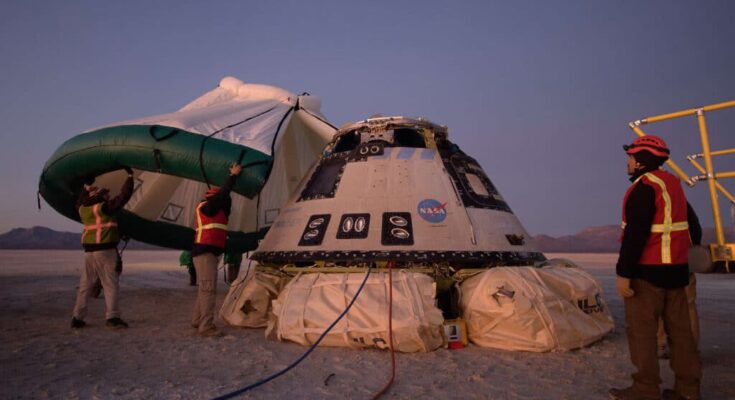
NASA has announced that it will be covering the unmanned return of Boeing’s Starliner, which will be returning without its crew.
According to a media advisory by NASA:
“Starliner is scheduled to autonomously undock from the space station at approximately 6:04 p.m. EDT Friday, Sept. 6, to begin the journey home, weather conditions permitting. NASA and Boeing are targeting approximately 12:03 a.m., Saturday, Sept. 7, for the landing and conclusion of the flight test.”
The event’s live coverage can be seen on the NASA app and NASA+. A conference will also be held prior to departure on September 4th.
This comes after news that the Starliner’s crew, Butch Wilmore and Suni Williams, will be staying behind on the ISS, as NASA and Boeing discovered helium leaks and problems with the spacecraft’s control thrusters when they arrived on June 6th.
The Starliner crew’s return
According to NASA, Wilmore and William’s return has been delayed. Initially, they were slated to spend eight days aboard the ISS. However, their stay on the ISS has been dragged out to eight months.
“Wilmore and Williams will remain aboard the station and return home in February 2025 aboard the SpaceX Dragon spacecraft with two other crew members assigned to NASA’s SpaceX Crew-9 mission.”
Because the SpaceX Dragon spacecraft must accommodate Wilmore and Williams, two original SpaceX Dragon crew members had to be bumped off the ship. NASA chose to remove Zena Cardman and Stephanie Wilson from the mission.
Zena Cardman would have been the commander, but that role has now been transferred to NASA astronaut Nick Hague, who was originally going to be the pilot. Roscosmos astronaut Aleksandr Gorbunov will be the other crew member, serving as mission specialist.
NASA Chief Astronaut Joe Acaba said deciding who to drop from the SpaceX Dragon crew was difficult. He ultimately decided that keeping a NASA astronaut on the crew was best.
Acaba said in a statement, “Zena and Stephanie will continue to assist their crewmates ahead of launch. They exemplify what it means to be a professional astronaut.”
In 2014, NASA hired SpaceX and Boeing to build spacecraft capable of transporting astronauts. They hired both companies following the need to use Russian rockets after they retired the Space Shuttle. This cost NASA millions of dollars. While SpaceX’s ship started its service in 2020, Boeing’s Starliner has been riddled with problems.
The Starliner still hasn’t received certification for normal flight operations, but NASA insists it is necessary as a backup to the SpaceX Dragon spacecraft, part of their arsenal. Boeing has never revealed why the Starliner has had so many setbacks over the past decade.



